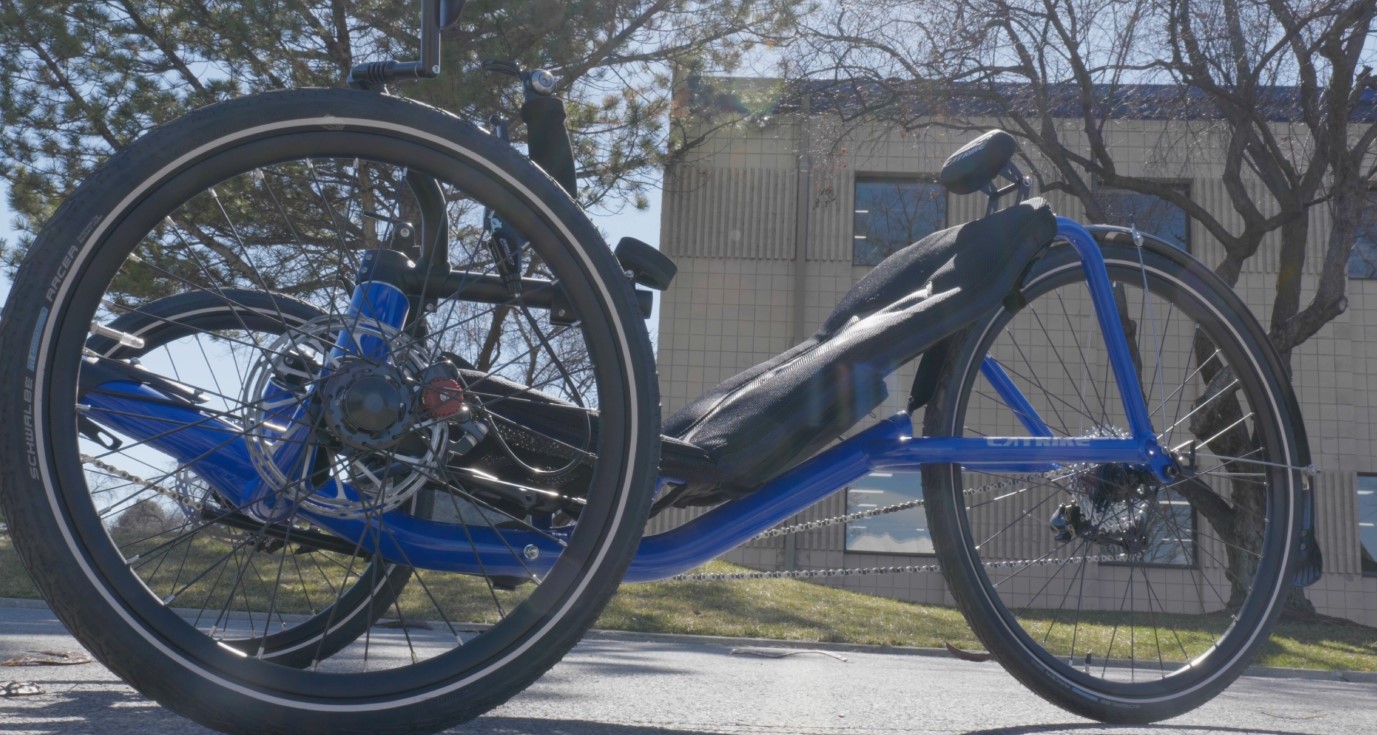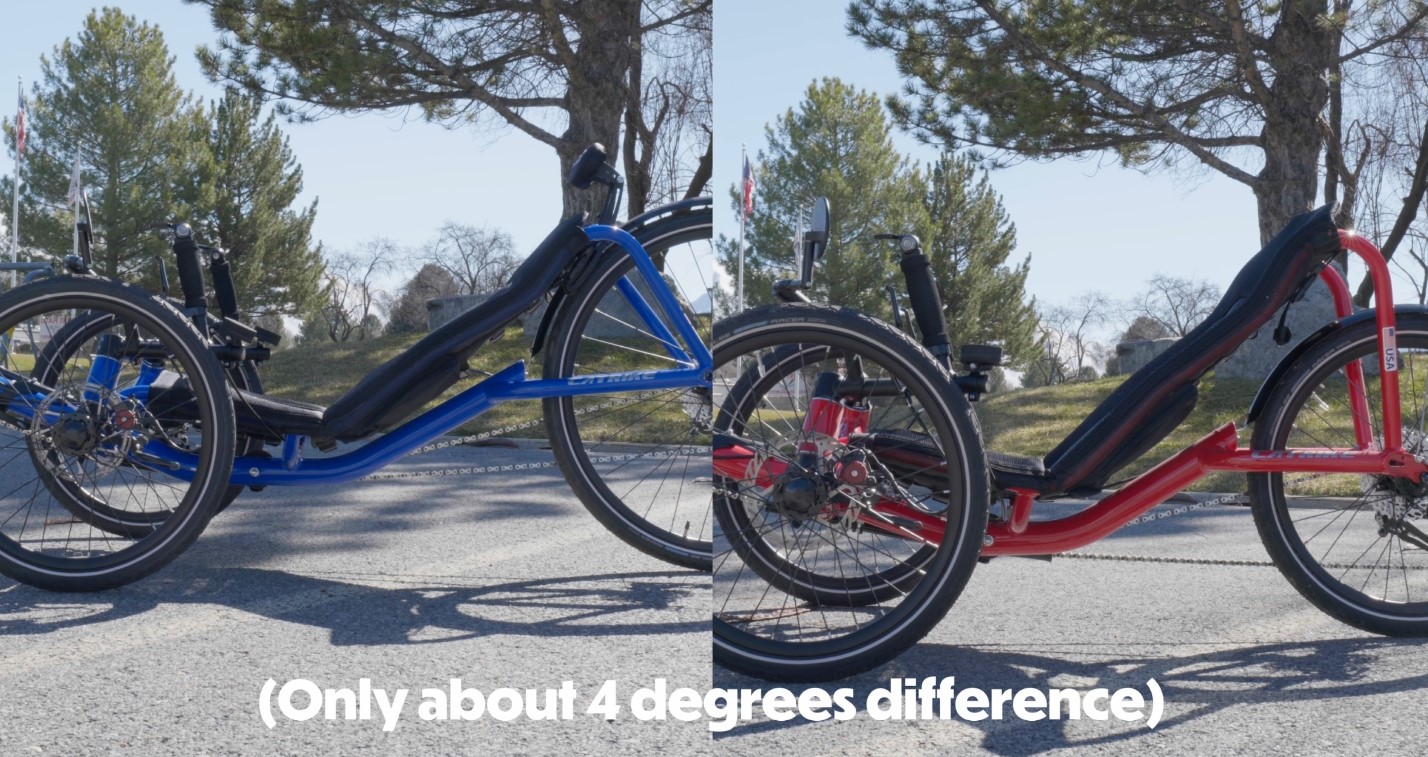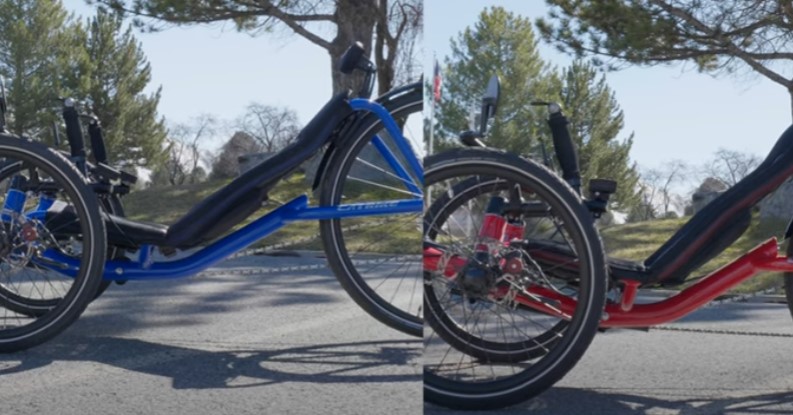

A Trike David vs. Goliath: The Catrike Pocket VS. The Catrike Expedition
Harold Guy - Published on 03/07/2024
Hello everyone and welcome to another Utah Trikes article. In this article Iím going to put two trikes head to head against each other and see what makes them similar, what makes them different and what option would be the best for you. Today Iím going to be covering the Catrike Expedition and the Catrike Pocket.

The Catrike Expedition is a multi-role 30spd trike with a aluminum frame, a 26in rear wheel and high quality Avid BB7 brakes the Expedition has all of the features that came to be known and loved on all high speed Catrike models.
On the complete opposite end of the Catrike spectrum we have the Catrike Pocket. The Pocket is a narrow frame trike with 20in wheels all the way around, it comes with the same drivetrain as the pocket, the same seat mesh as the Expedition and with the exception of the 26in rear wheel they are essentially the same trike, but as always there is a deeper purpose between both of these trikes, so letís move past the skin deep judgements and get into the meat and bones of the Expedition Vs. The Pocket.
The Catrike Expedition and the Pocket are true recumbent trikes meaning the both trikes have seats that are locked into a steep recline. Most commuter type recumbent trikes are going to have a fairly upright seat angle of 51 degrees, where the pocket and Expedition both have seat angles of 37-41 degrees.
The benefit of having a steeply reclined seat is that you'll have the weight of your back better dispersed along the seat instead of resting only on your tailbone. It also allows you to use the full length of your legs and calf muscle to have more power while pedaling. Having more power while pedaling will assist you in better speeds, climbing, pedaling consistency, and a better workout.
The 41 degree seat angle on the Expedition is going to be slightly more upright then the angle on the pocket so for those looking for a slightly more upright position in a fully recumbent trike the Expedition would be the way to go. Other than seat angles for the Pocket and the Expedition being very similar to one another there is one glaring difference between the two models and that is going to be the rear wheel size.

The 26in rear wheel on the Expedition is going to be the biggest visual difference between the Pocket and the Expedition. Other than looking fashionable the 26in wheel offers a lot of functionality over the 20in wheel that comes stock on the Pocket.
A 26in wheel is going to give you a better high end gear and better rolling resistance when going over potholes or off road trails. On the Expedition on the highest gear on the front crankset and the rear cassette you can expect to get up to 18-20 MPH with ease and youíll still be able to pedal while going downhill.

The Pocket has the same amount of gearing as the Expedition but because of its smaller rear wheel you are going to be limited in your high end speed. While in the Pocketís highest gear on your crankset and cassette you can only expect to get up to a 13-15 mph top end speed. Speed is not everything though because even though the 26in rear wheel will make you much faster than the Pocket it also has the disadvantage of going slower uphill.
As the size of your rear wheel increases on a trike the amount of energy needed to power the trike will increase as well so while going up a hill youíre going to have to put more torque down as you pedal and it will make you just that more exhausted as you're climbing.
A 20in wheel will require less kinetic energy to accelerate and while going uphill youíll be using less torque to cover more distance. When it comes to hill climbing the Pocket manages to shine above the Expedition but when it comes down to the frames of both trikes, whatís the difference and why does it matter?
What's the difference and Why does it matter?

At first glance the Pocket and Expedition share a very similar profile. Both trikes have a full reclined seat position with an non-adjustable seat mesh, theyíre very low to the ground and have the same accessories and drivetrain but as with many things in the world we canít just judge a book by its cover.
The Pocket is a narrower and shorter trike coming in with a length of 68in and a width of only 31in, while the Expedition is longer at 77in and wider at 32.5in. This measurement difference between the two trikes is what truly defines them into their respective trike roles.
A trike that is narrower will have a smaller turning radius, we can see this directly with the Pocket as it only has an 8Ft turning radius while the Expedition has a 9ft radius. Being narrower means that the Pocket will be easier to turn and corner than the Expedition, but being small is not always an advantage while riding.
A longer trike usually means that the trike has a longer wheelbase which, by looking at the dimensions for the Expedition, we can see that it has a wheelbase of 43in which is a whole whooping 8in longer than the Pocket.

Now reader you might be wondering, ďHarold who cares about a longer trike, why does it matter how long or short a wheelbase is?Ē While I wonít keep you in suspense.
A larger wheelbase on a trike means that rough road conditions will be dispersed throughout the entire frame of the trike and that while riding youíll be able take on pot holes, cracks and even curbs without having to sacrifice your bike as much.
Between the trikes it looks like the Pocket is much better for urban riding and the Expedition is a much better option for touring. How can we be sure though? Well, this leads me to my favorite part of the article, the head to head riding test.
Expedition VS. Pocket
I began the test by first taking out the Pocket. As with all other 20in rear wheel trikes, I found the Pocket to be quick to accelerate and very responsive to torque put down on the pedals.

I went to our local roundabout and started spinning around like a freak. I was able to keep a tight turn the entire time I was out and I did not feel like I was overshooting any turns. Along my ride I found a fairly steep hill and rode up it with the Pocket. While going uphill is never my first choice while riding, the Pocket was easy to pedal while going uphill and in the lowest gear I had a very easy time climbing and maintaining speed.
On my way back to the shop It became very obvious to me though that this trike is a little bit of a tight fit for me. With the smaller frame width and length of the Pocket, for a bigger and taller guy like me it's a bit tough to work with at times, especially to get tighter turns. If you are a bigger rider keep the size difference of these trikes in mind. But soon after I was back at the shop and I switched out to the Expedition which fit me much better.
After the hill I rolled back into the shop and switched out to the Expedition. Initially the Expedition was very slow to accelerate due to its larger rear wheel but when I finally got up to my cadence I could feel myself going much faster then I was on the Pocket. Maintaining speed was also a breeze as I didnít have to constantly be pedaling to maintain a decent road speed.
I took the Expedition out to the roundabout and it definitely does have a much wider turning radius and I felt myself having to fight the Expedition more to get into a tighter turn. I found the steep hill again and took Expedition up it and it was a pain, about mid-way up the hill I could feel myself having to fight the trike for every inch up. I was grateful when I finally crested the top of the hill and I was able to coast down.

After the hill I rolled the Expedition into the shop. Between the two trikes itís pretty clear that the Expedition is ideal for those long stretches of flat road where you can easily maintain your speed, while the Pocket is ideal for tight corners and uphill riding.
While the Pocket is great for riders who are on the smaller side or who are looking for a more compact ride. It's great for brief touring with tight corners and uphill riding, making this a good specialty ride kind of trike.
If youíre looking for a speed touring trike or a nimble hill climber either the Expedition or the pocket have you covered. But For these trikes it's mostly about the size and convenience that you are looking for so I would greatly recommend test riding them yourself if you are able to. It's the best way to find out what's best for you on two trikes with such different builds.
The only other major difference worth mentioning is that the Expedition comes with a thru-axle rear wheel which makes the rear wheel more secure and eliminates any possibility of your rear wheel falling out. The only drawback to the Thru-Axle rear end on the Expedition is that itís not compatible with an internally geared hub but we do have conversion plates that can fix that problem. The Pocket has a quick release rear wheel so it is already compatible with any internally geared hub.
Thereís a lot to be gained between the two models in comparison today. If youíre looking for a speed touring trike or a nimble hill climber either the Expedition or the pocket have you covered.
If you live near our shop in Springville, Utah or are willing to take the drive, our showroom is always open for customers to see all of these trikes in person and to take them out for a test drive so you can get the most in-depth hands-on experience before you make that big purchase. So come on in we would love to help you out!
Thats all for the comparison of the Catrike Expedition VS the Catrike Pocket. Hopefully this article helped you get some insight on these two trikes and which one might be right for you! If you are interested in weekly informative Trike content make sure to let us know in the comments.
With that remember to Relax, Spin Fast, and ride Trikes.




